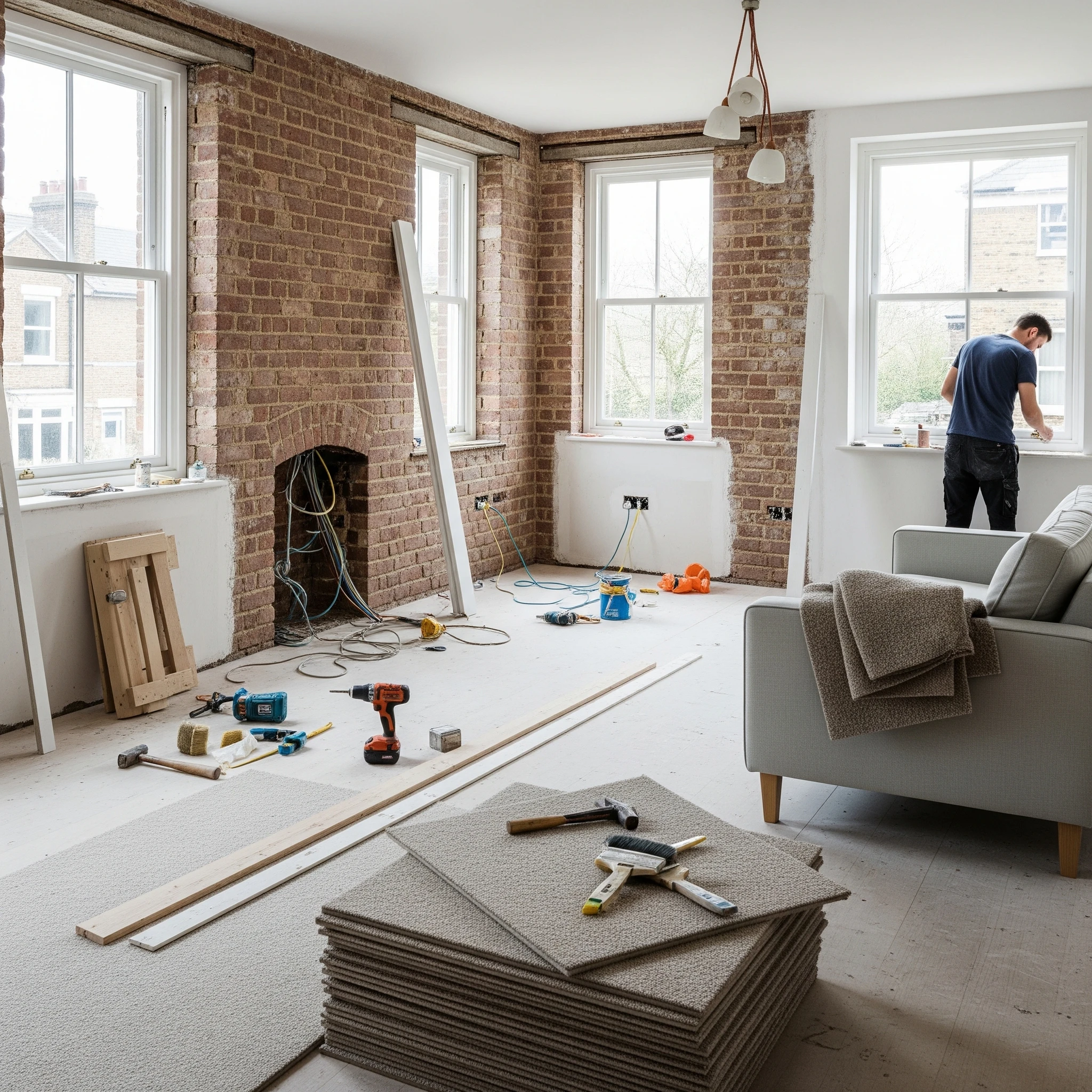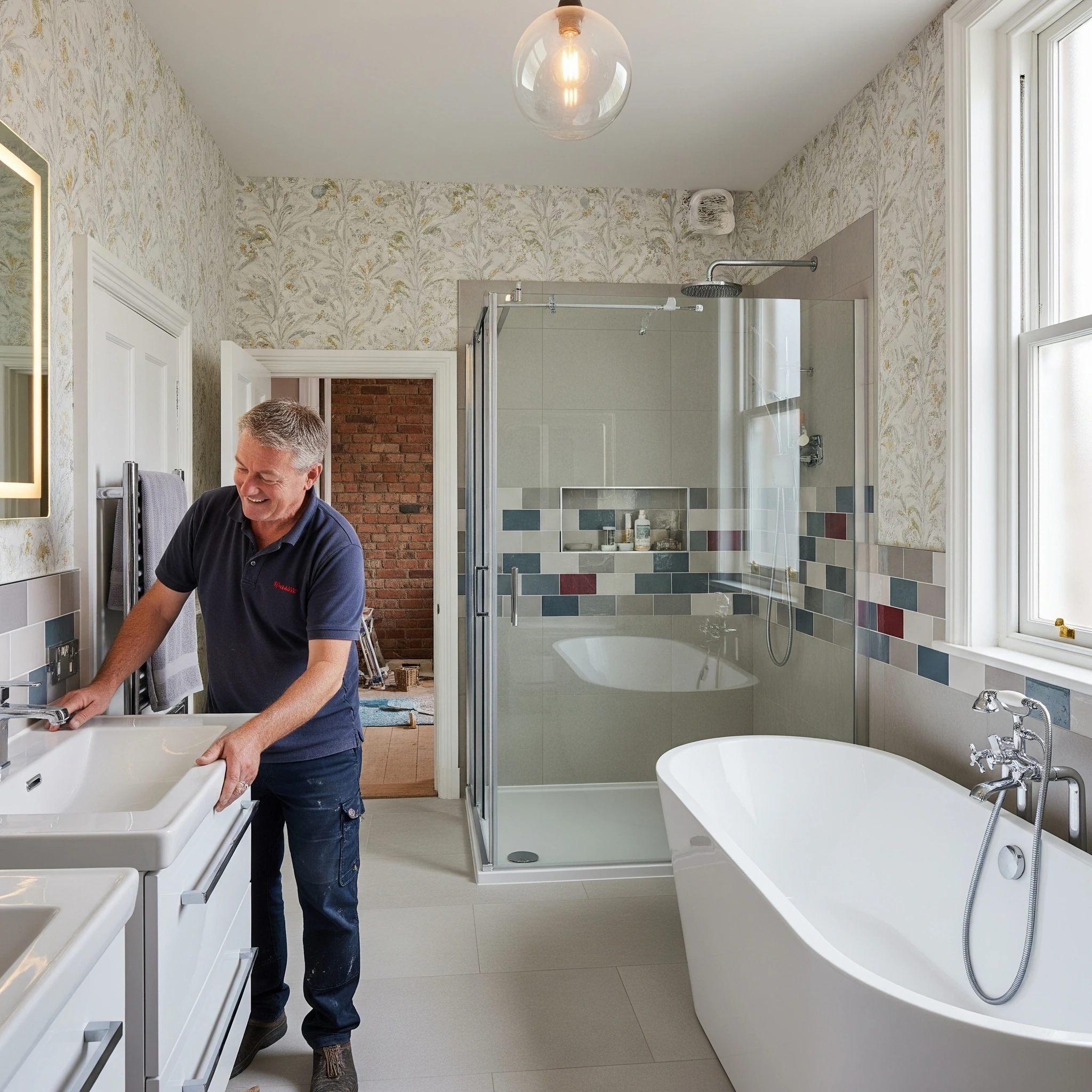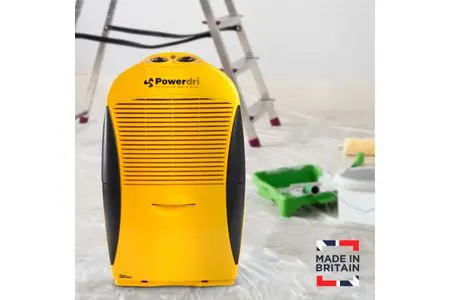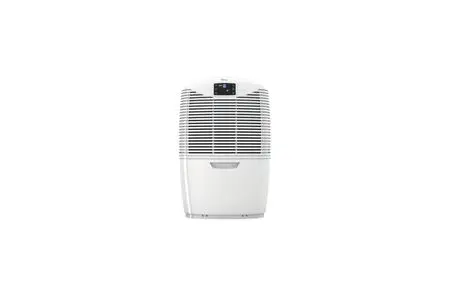 Free delivery on orders over £75 ex VAT
Free delivery on orders over £75 ex VAT Free click & collect from branches nationwide
Free click & collect from branches nationwideIf you're looking for an easy way to keep moisture levels in check during building projects, look no further than essential dehumidifiers. Helping make a big difference in the air quality in enclosed spaces, dehumidifiers create a healthier and safer working environment.
By investing in the right dehumidifier for your next project, you can ensure a dry environment that promotes efficient construction practices and protects the integrity of your materials. Here at City Plumbing, we show you how to make dehumidifiers an essential component of your construction toolkit.
Why Are Dehumidifiers Essential for Your Building Project?
Moisture control is crucial in construction projects to prevent mold growth, material degradation, and overall structural damage. Dehumidifiers play a key role in maintaining optimal humidity levels, which can help speed up the drying process of materials such as concrete and paint. By reducing excess moisture in the air, dehumidifiers create a more stable indoor environment for workers, equipment, and materials.
What Types of Dehumidifiers Are Available?
There are several types of dehumidifiers to choose from, each designed for specific applications and space requirements. The most common types include:
Refrigerant Dehumidifiers: Ideal for residential and small-scale commercial projects, these units use refrigeration coils to extract moisture from the air.
Desiccant Dehumidifiers: Best suited for low-temperature environments, desiccant dehumidifiers use a chemical drying agent to remove moisture.
Commercial Dehumidifiers: These heavy-duty units are designed for larger construction sites and industrial applications, with high moisture removal capacities.

How to Choose the Right Dehumidifier for Your Project
When selecting a dehumidifier for your building project, consider the size of the space, the level of moisture present, and the specific environmental conditions. Here are some key factors to keep in mind:
- Capacity: Choose a dehumidifier with the appropriate moisture removal capacity to effectively cover the square footage of the construction site.
- Portability: Depending on the size of your project, consider whether a portable or stationary unit would be more suitable for easy manoeuvrability.
- Energy Efficiency: Look for energy-efficient models that can help reduce operational costs while maintaining optimal performance.

Common Uses For Dehumidifiers in Trade Projects
1. Building Projects & Construction Drying
Why they're essential: Building materials like concrete, plaster, and timber naturally contain a lot of moisture. If not dried properly, this moisture can lead to:
- Delays: Finishing trades (painting, flooring, etc) can't begin until the building is adequately dry.
- Damage: Warping of wood, cracking of plaster or concrete, and adhesion problems for finishes.
- Mould and damp: Persistent moisture creates ideal conditions for mould growth, which is a health hazard and can cause structural damage.
How dehumidifiers help:
- Accelerated drying: Dehumidifiers extract moisture from the air, speeding up the natural drying process of materials. This can significantly reduce project timelines.
- Controlled drying: Unlike direct heating, which can dry surfaces too quickly and lead to cracking, dehumidifiers provide a more controlled and even drying environment.
- Material preservation: Maintaining lower humidity levels on-site protects sensitive materials like wood and steel from damage or rust.
2. Drying Plaster and Paint
Important considerations: While dehumidifiers can assist, timing and moderation are crucial when drying plaster and paint.
- Plaster:
Patience is key: Plaster needs to cure, not just dry. Drying it too quickly with aggressive dehumidification can lead to brittleness, cracking, and a poor finish.
Optimal humidity: Aim for relative humidity (RH) of 55-65% for proper plaster curing. If the room is excessively humid (above 70%), a dehumidifier set to maintain 60% RH can be beneficial.
Avoid direct heat/airflow: Don't point dehumidifiers or fans directly at freshly plastered walls.
- Paint:
Follow manufacturer guidelines: Paint needs time to cure and bond properly. Rushing the process with a dehumidifier can lead to brittle finishes, peeling, or defects in colour.
Ventilation is usually sufficient: For most paints, good air circulation (opening windows/doors) is generally enough.
When to use a dehumidifier for plaster/paint:
- High humidity conditions: If the ambient humidity is consistently high, hindering natural drying, a dehumidifier can help bring it down to optimal levels.
- After initial setting: Wait until the plaster has set (typically a day or two) before introducing a dehumidifier, and use it on a moderate setting.
3. Dealing with Minor Floods and Water Ingress
Immediate action is vital: Water damage can quickly lead to mould growth and structural issues.
- Identify and stop the source: Before using a dehumidifier, find and fix the leak or ingress point.
- Remove standing water: Use wet vacuums, pumps, or mops to remove as much standing water as possible.
- Combine with fans: Dehumidifiers work best in conjunction with air movers (fans) to circulate air and evaporate moisture from surfaces.
- Speed-up drying: Dehumidifiers pull moisture from the air, preventing it from re-saturating materials and accelerating the drying of damp walls, floors, and other affected areas.
- Mould prevention: By rapidly reducing humidity, dehumidifiers create an environment where mould struggles to grow (mould can start to form within 24-48 hours)
Key features for flood recovery:
- High extraction rate: To handle large volumes of moisture quickly.
- Continuous drainage: So you don't have to empty the water tank constantly.
- Robust construction: To withstand the demands of a wet environment.
- Automatic restart: Useful in case of power interruptions.
4. Solving Condensation and Damp Issues
Understanding the cause: Dehumidifiers can be a good temporary solution or symptom reliever for condensation and dampness, but they don't address the root cause. Condensation often arises from poor ventilation, cold spots, or excessive moisture generation indoors.
- Condensation: Occurs when warm, moist air meets a cold surface, causing water droplets to form. Dehumidifiers reduce the overall humidity in the air, thereby reducing the likelihood of condensation.
- Damp: Can be caused by various factors, including rising damp, penetrating damp (leaks from outside) or condensation. Dehumidifiers are most effective for dampness caused by high humidity and condensation. For structural damp issues (e.g. leaking pipes, damaged gutters) the underlying problem must be fixed first.
How dehumidifiers help:
- Reduce airborne moisture: They continuously extract water vapour, making the air drier.
- Prevent mould and mildew: Lower humidity makes it difficult for mould spores to germinate and grow on surfaces.
- Improve air quality: Some models come with air filters that can help remove airborne particles and odours associated with dampness.
Considerations for ongoing damp/condensation:
- Capacity: Choose a dehumidifier appropriate for the size of the room or area you need to treat.
- Humidistat: Allows you to set a target humidity level, and the unit will switch off/on automatically to maintain it.
- Continuous drainage option: Saves you from emptying the tank frequently.
- Energy efficiency: Look for models with good energy ratings, as they may run for extended periods.
- Portable units: Good for moving between problem areas.
Shop EBAC Dehumidifiers at City Plumbing
A key player in the market, EBAC dehumidifiers are particularly notable for their pioneering dehumidifier technology. EBAC is a British family-owned company who have been designing and manufacturing dehumidifiers in the UK since 1972.
Here at City Plumbing, we’re proud to offer a selection of dehumidifiers from the renowned brand EBAC and all at some fantastically competitive prices.
For a powerful, semi-professional dehumidifier, the EBAC Powerdri allows you to simply select the target humidity level and this will do the rest!
This model is ideal for helping with the removal of excess moisture during common building projects with its 18-litre capacity, and extra-large water container.

For a dehumidifier with smart control technology, the EBAC 3850e can remove up to 21 litres per day at some of the lowest running costs.
A fully enclosed water container, this model boasts changeable carbon fullers, auto-shutoff, air purification mode and a user-friendly LED display.

Dehumidifiers Are Essential Tools for Many Building Projects
Dehumidifiers are indispensable tools for trade professionals. Choosing the right type and size, understanding their limitations, and using them correctly will lead to better project outcomes, healthier environments, and fewer callbacks.
Helping to control moisture levels and create a safe, efficient work environment, by understanding the different types of dehumidifiers available and selecting the right one for your specific needs, you can promote a dry and hassle-free project.
If you’re looking for helpful advice and suggestions on choosing the best products for your customers, take a further look at our City Plumbing website for more information.

